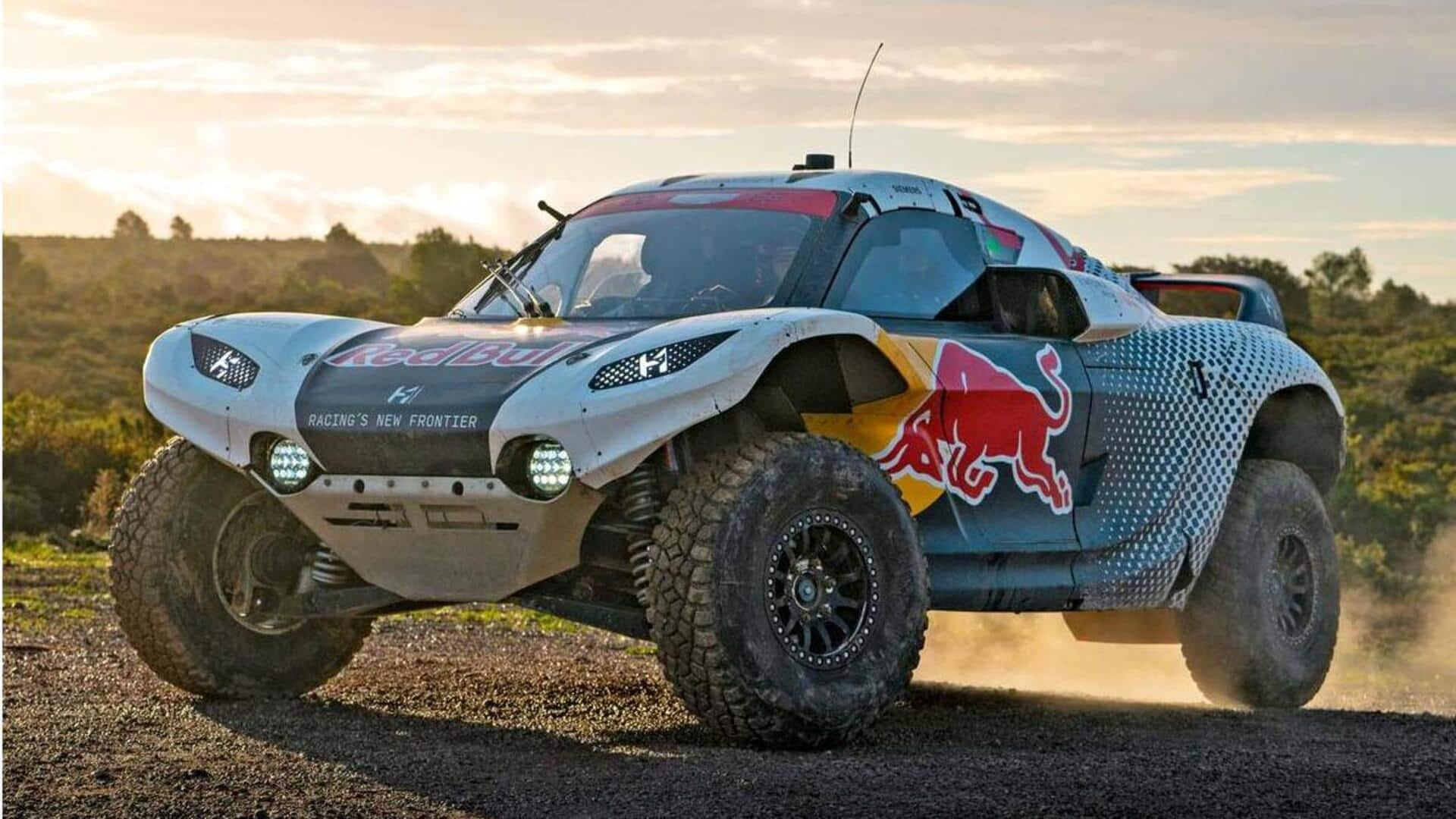
These aggressive-looking racing cars are fueled by hydrogen
What's the story
The FIA Extreme H World Cup, an upcoming off-road motorsport championship, will showcase the power of hydrogen fuel cell technology.
The competition will feature sporty-looking Pioneer 25 cars running on hydrogen fuel cells using sustainably produced hydrogen.
Even the electricity needed for on-site activities at this event will be produced using stationary fuel cells.
This novel approach will show the promise of this advanced automotive tech in action.
Hybrid design
A blend of hydrogen and electric power
The Pioneer cars are built on Extreme E electric off-road racers, featuring a similar electric drivetrain.
However, in these rides, the batteries have been partially swapped with a 75kW hydrogen fuel cell system.
It is powered by 2kg of compressed hydrogen gas stored at 700 bar in two Toyota Mirai tanks.
To ensure the fuel cells provide a steady stream of power rather than transient bursts, a buffer battery has been added into the mix.
Performance metrics
Technical specifications and performance
The Pioneer cars' buffer battery runs at 450V-850V and powers two 268hp motors driving both front and rear axles.
This gives a total output of 536hp, allowing the cars to hit a top speed of 200km/h.
Despite weighing a hefty 2,200kg, the cars can go from 0-100km/h in just 4.5 seconds.
Symbio supplies the fuel cell for these cars, but teams can use their own system too.
Production details
Battery production and car manufacturing
Batteries for the Pioneer cars are supplied by Fortescue WAE, which opened a technical center at Kidlington, Oxfordshire in 2023. This facility also supplied batteries for Extreme E.
The Extreme H batteries will be manufactured here but with a slightly smaller capacity than those used in Extreme E, as the main power source is the fuel cell.
Like Extreme E, Spark Racing Technology based at Tigery outside Paris manufactures these cars.
Compliance
Pioneer 25: Meeting FIA standards and testing
The Pioneer 25, each 6,000mm long with a 3,200mm wheelbase, passed its compulsory FIA chassis crash tests last year.
Unlike an Extreme E car, the Pioneer 25 has a strengthened chassis, extra carbon-composite crash structures over the hydrogen tanks as well as energy-absorbing composite structures on both sides of the vehicle.
High- and low-pressure hydrogen systems were installed during tests and both fully pressurized to ensure no loss of pressure occurred.